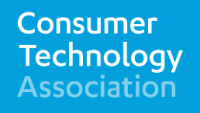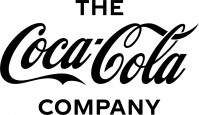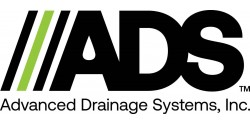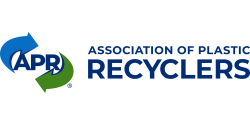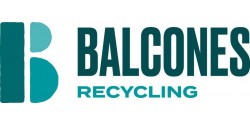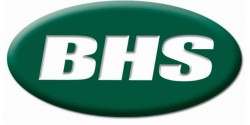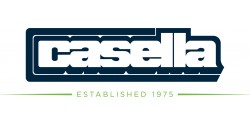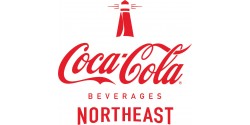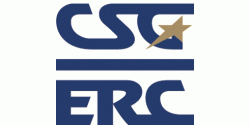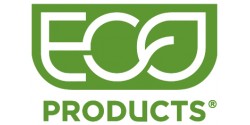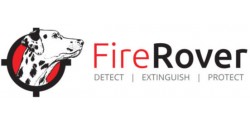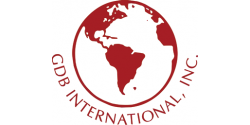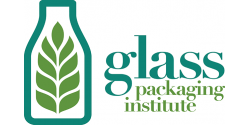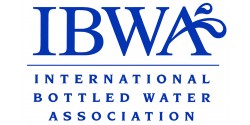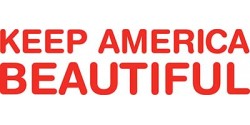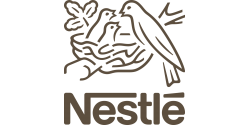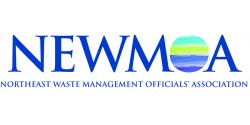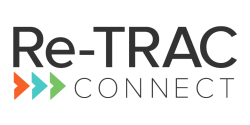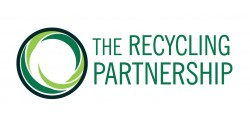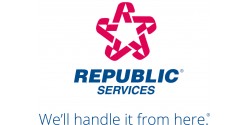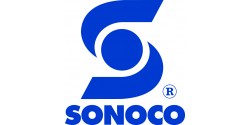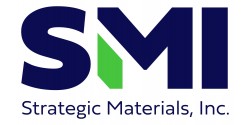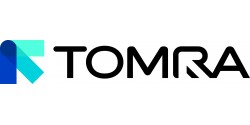July 2007
New Supporting Member: Rockland County Solid Waste Management Authority, Hillburn, New York
NERC NEWS
- NERC Fall ’07 Conference Agenda Released
- Grant for Manure Management Education
- Toxics in Packaging Report Just Released!
- EPP Business Mentoring PowerPoint Now Available
- How to Use the New Electronics Environmental Benefits Calculator – Free Teleconference
- Save Money, Benefit the Environment, and Get an Award – What more could you ask?
- NERC Board Summer Planning Meeting
STATE UPDATES
MAINE
- Steering Committee Kicks-off Maine Recycles Week 2007
- ‘Single Sort’ Recycling Is Unveiled In Portland
- Legislative Update
NEW YORK
- DEC & ESD Win EPA Award for Tire Recycling Programs
- University at Buffalo Opens Tires in Civil Engineering Recycling Program
- 2007 Innovator of the Year
- 2007 Earth Day Environmental Fair
- New York’s Bottle Bill at 25: The Returnable Container Act Celebrates a Quarter Century
- NYSDEC Unveils a Redesigned Website & New Web Address
RHODE ISLAND
VERMONT
To join the EMail Bulletin list…
Send an email to executive.director@nerc.org making the request. Please be sure to include your full name and organization.
|
NERC's mission is to advance an environmentally sustainable economy by promoting source and toxicity reduction, recycling, and the purchasing of environmentally preferable products and services. |
State and Advisory Member Updates are provided as submissions to NERC and may not reflect the policy or position of the Northeast Recycling Council, Inc.
TOPICS
MEMBERSHIP
We are very pleased to share with you the following New Supporting Member:
Rockland County Solid Waste Management Authority, Hillburn, New York
Thank you!
It is through the active participation and support of its Advisory Members that NERC is able to provide the strength of multi-stakeholder involvement and problem solving.
To see a listing of Advisory Members and the benefits of membership, visit the NERC Advisory Membership web page.
It is the broad spectrum of interests represented by NERC’s Advisory Members and Board Members and their willingness to participate that significantly contributes to the unique and important role that NERC plays in recycling in the region.
NERC NEWS
NERC Fall ’07 Conference Agenda Released
Check out NERC’s Fall ’07 Conference Agenda and plan on joining us on October 16 – 17 to discuss some of the industry’s hottest topics —
- Global Recycling Markets,
- Materials Management and its Effect on Global Warming,
- Large Retailers’ Environmental Strategies,
- Legislative Updates,
- Movement of Materials Across State Lines,
- Food Waste Composting in the Northeast, and
- Expanding Markets for Challenging Recyclables
The Conference will be held at the historic Hotel Northampton in Northampton, Massachusetts.
For additional information, contact Mary Ann Remolador, NERC’s Assistant Director & Conference Organizer.
Grant for Manure Management Education
NERC was recently awarded a grant from the United States Department of Agriculture, Rural Development Solid Waste Management Grant Program, to conduct manure management education in New Hampshire, New Jersey, and Vermont. The project specifically targets hobby harms — farms with small acreage having a few animals for recreation or as a side income. Hobby farms are often owned by people who lack farming experience. This sector is rapidly growing and accounts for the majority of farms in all three participating states.
Due to insufficient knowledge, manure management is frequently overlooked as a stewardship responsibility. Hobby farms may remain unknown to agricultural agents because they do not require permitting. Moreover, staffing for agricultural technical assistance is limited due to state and federal budgets. NERC hopes to help fill this void by providing technical assistance and workshops to hobby farmers, as well as developing a manure management handbook for hobby farms and a unique “quick guide” which will provide a template for developing a farm-specific manure management plan. It will include simple calculator tools to assist with determining how much manure a farm produces, how much can be land-applied on the farm, where it can best be applied to avoid water pollution and odor problems, and how much manure is surplus.
For more information contact Athena Lee Bradley, NERC Projects Manager at athena@nerc.org.
Toxics in Packaging Report Just Released!
The Toxics in Packaging Clearinghouse (TPCH) just released the first comprehensive report on the presence of toxic heavy metals in packaging, fifteen years after most Northeast states passed toxics in packaging laws. The TPCH screened 355 packaging samples between October 2005 and February 2006 for the presence of four restricted metals (lead, cadmium, mercury, and hexavalent chromium) using a portable NITON x-ray fluorescence (XRF) analyzer. The project was funded, in part, by the U.S. Environmental Protection Agency.
Of the packages tested, 16.0% exceeded the screening threshold of 100 parts per million (ppm) for the presence of one or more of the restricted heavy metals, and may be in violation of state toxics in packaging laws. The Model Toxics in Packaging Legislation and state laws that are based on the Model prohibit any intentional use of the restricted heavy metals in packaging, and limit the incidental presence of the metals to 100 ppm in any packaging components.
There were two types of packaging that dominated the samples failing the screening test: 1) flexible polyvinylchloride (PVC) bags, packaging textiles, inexpensive toys, pet supplies, and cosmetic products, for example; and 2) inks and colorants used on plastic shopping/mailing bags. Cadmium and lead were the most frequently detected of the four regulated metals. Interestingly, country of origin was a major factor in determining compliance. The study found that elevated levels of the restricted metals were largely found in the packaging of products imported from Asia.
Download the full report, An Assessment of Heavy Metals in Packaging: Screening Results Using a Portable X-Ray Fluorescence Analyzer, on the TPCH website.
EPP Business Mentoring PowerPoint Now Available
As part of NERC’s USDA-funded Environmentally Preferable Purchasing Peer-to-Peer Business Mentoring Project, NERC staff has developed a PowerPoint presentation that describes this mentoring process. This presentation was given at the Federation of New York Solid Waste & Recycling Conference in May, and the 7th Annual South Texas Resource Recovery Roundtable on Green Purchasing in June of this year.
For additional information, contact Mary Ann Remolador, NERC’s Assistant Director.
How to Use the New Electronics Environmental Benefits Calculator – Free Teleconference
On September 6, 1 p.m. Eastern, NERC will host a teleconference to introduce the new EPA Electronics Environmental Benefits Calculator; including how to use it and a demonstration of the environmental impacts of procuring EPEAT© -registered computers, laptops, and monitors, and the impact of recycling and reuse.
The teleconference is open to everyone and is available through a grant from EPA Region 3. Pre-registration will be required. For more information, or to register for the free teleconference, contact Lynn Rubinstein.
Save Money, Benefit the Environment, and Get an Award – What more could you ask?
By choosing to become a Partner in the Northeast State Electronics Challenge (NSEC) – a new initiative being developed by NERC for local, regional, and state government entities through a grant from EPA – you commit to setting goals and implementing activities aimed at improving the life cycle management of electronic assets such as:
- The purchase of environmentally preferable computer products that meet the performance standards of the Electronic Product Environmental Assessment Tool (EPEAT©).
- The use of power management features on computer systems to realize the energy savings of Energy Star® rated computers.
- Extending the lifespan of computers through strategies such as selective upgrades of equipment and donation.
- The recycling of computers in an environmentally sound manner.
It’s estimated that for every 1,000 environmentally preferable EPEAT© computer systems purchased and recycled, states will reduce:
- Energy usage by 1.2 million kWh, equivalent to the electricity needed to power 101 households annually;
- Greenhouse gas emissions by 90 MTCE, the equivalent of removing 71 passenger cars from the road per year;
- Municipal solid wastes by 34.7 metric tons, or the waste generated by 18 U.S. households annually;
- Hazardous waste entering the waste stream by 17 metric tons; and
- Toxic material use, including lead and mercury, by 340 pounds.[1]
NSEC Partners will receive public recognition for signing-up as a Partner, and will receive an award for achieving annual goals. Partners will receive free technical assistance to assist with implementation of their NSEC goals, as well as be invited to participate in Partner-only conference calls and conferences. And, by using EPEAT©-registered computers you will save energy and money. Truly, what more could you ask?!
The NSEC is expected to have its official launch in September – complete with a resource-intensive website. For more information, contact Lynn Rubinstein.
NERC Board Summer Planning Meeting
The NERC Board of Directors will be holding its Annual Planning Meeting in July, Durham, NH. Among other items to be discussed will be the FY 08 Operating Plan, future project ideas, and NERC priorities. Representatives from all 10 NERC states are expected. For more information, contact Lynn Rubinstein.
STATE UPDATES
MAINE
Steering Committee Kicks-off Maine Recycles Week 2007
The Maine Recycles Week Steering Committee met to develop a new budget and begin the work to solicit sponsors. The State Planning Office staffs this committee which is represented by businesses, municipalities, and educators. The committee will meet again in the middle of the summer to review the school competition and awards. Maine Recycles Week is celebrated each year from November 8 - 15 in communities from around the state to raise the public awareness toward recycling and the importance of buying products that are made from recycled products.
‘Single Sort’ Recycling Is Unveiled In Portland
About 50 representatives from the state and from ecomaine’s (the former ‘Regional Waste Systems’ organization) member communities gathered on May 3 for the ceremonial start-up of their new mechanized sorting line. The new facility, which accepts co-mingled recyclables and then separates them by product, is the first of its size and kind in the Pine Tree State. The building, which was used for processing recyclables for over 15 years, has been transformed into an almost eerie space filled with conveyors, sorting, and baling equipment. A highlight of the new system is the optical sorter for sorting all seven plastics (see accompanying photo), the only one in the region. At the present time, the operation will process approximately 18 tons of recyclables per hour. ecomaine’s new process will make recycling convenient for their region’s citizens and will increase recycling rates over time. Bruce White represented the SPO Waste Management and Recycling Team. F
Legislative Update
The Waste Management and Recycling Team has been moderately active with various Legislative initiatives and activities during the couple of months. The first session of the 123rd Legislature is scheduled to go through June 20, 2007.
A number of bills drew our attention this year, including our own bill that offered changes to statutes, based upon recommendations from our Solid Waste Management Policy Review Task Force, which completed its work in early 2006. Among the changes are having the biennial Waste Generation and Disposal Capacity Report become an annual report and replace the Task Force to review solid waste management policy with a standing advisory council. The bill received some minor amendments and was approved by the Legislature and signed by the Governor on May 30, 2007. It is referenced as Public Law Chapter 192.
In addition, the Legislative Blue Ribbon Commission on Solid Waste Management, that met during 2006, in addition to having a report on their meetings and findings, submitted legislation to carry their recommendations to the Natural Resources Committee. LD 810 and LD 1908 did this and while discussion was had on the bills and amendments offered, we are awaiting final language for these bills. It is expected, however, that LD 810 will permit the Natural Resources Committee to meet up to four times during this summer and fall to continue discussions on solid waste issues.
A number of other solid waste bills were presented to the Natural Resources Committee on topics from exempting the sale of certain mercury containing items from the existing ban, the recycling of cell phones, but other committees also touched on solid waste management concerns. The Agriculture, Conservation and Forestry Committee spent a great deal of time on LD 564, entitled “An Act to Streamline the Regulation of Agricultural Composters” and the Business, Research and Economic Development Committee heard several bills related to Maine’s beverage container deposit program, to either increase the deposit value, modify the redemption center qualification requirements or to seek the unreturned deposits to assist with state programs.
NEW YORK
NYDEC & ESD Win EPA Award for Tire Recycling Programs
New York’s Dept. of Environmental Conservation (NYDEC) and Empire State Development (ESD) were jointly awarded an Environmental Quality Award by EPA Region 2 in a ceremony held April 26, 2007, in conjunction with Earth Week, at EPA Headquarters in New York City. The New York agencies were among 42 recipients covering the Region 2 territories of NY, NJ, Puerto Rico and the U.S. Virgin Islands.
The DEC and ESD combined efforts to address the state’s 29 million tires in 95 non-compliant waste tire stockpiles, and improve the recycling markets for the 20 million waste tires generated annually. Today, 8.3 million tires have been abated by DEC at the waste tire sites. ESD has created additional capacity to turn seven million tires from the annual waste stream into finely ground rubber for use in a number of other applications.
University at Buffalo Opens Tires in Civil Engineering Recycling Program
Empire State Development awarded $1.8 million to the University at Buffalo’s Center for Integrated Waste Management to be used over the next five years to create the New York State Tire Derived Aggregate Program. The purpose of the program is to expand the use of recycled tires in construction applications through research and education.
The effort is the State’s most comprehensive effort yet to explore and establish new markets for used tires in civil-engineering applications. The purpose of the program is to serve as a catalyst to promote the use of tire derived aggregate (TDA) or tire chips, as they are known commonly, in civil-engineering applications around the state.
“New York State’s interest is in making sure there is a healthy and diverse market for recycled tire products,” said Louis P. Zicari, Jr., associate director of the UB Center for Integrated Waste Management and one of the principal investigators on the Empire State Development grant. “We’re helping the state diversify the TDA market by looking at technological, economic and regulatory issues.”
Under the program, the Center for Integrated Waste Management will conduct research on the use of tire chips for civil engineering applications and establish a central clearinghouse of information on the subject, tracking progress of all civil-engineering uses of tire chips around the state. It also will establish a forum to bring together state and national stakeholders, including tire chip producers, intermediary consumers, end users, technology providers, government agencies, researchers and regulators.
Some of the construction applications that will be studied under the new program include septic system leach fields, insulating layers for new roads, lightweight fill to use behind bridge embankments and backfill for building foundations.
The announcement of the five-year grant builds on a successful demonstration project that the UB Center for Integrated Waste Management conducted for Empire State Development in which the researchers designed, installed and analyzed the benefits of a full-size septic leach field using TDA as a replacement for stone aggregate. UB developed a website to convey information on the use of TDA in septic systems.
ESD funds Pollution Prevention Institute at RIT
Empire State Development (ESD) awarded Rochester Institute of Technology’s Center for Integrated Manufacturing Studies (CIMS) a $550,000 grant to establish a new pilot initiative in delivering pollution prevention technical assistance and research to small and medium-sized companies.
The pilot will leverage CIMS’ existing research in alternative cleaning technologies; metal coating and remanufacturing technologies; sustainable product and process development, demonstration and implementation; green product assessment; and health and safety training to assist companies in preventing pollution. The project will also enhance economic efficiency and productivity as well as provide informed input for future statewide pollution prevention efforts.
As the model for effective environmental stewardship has moved from a paradigm of pollution control to prevention, increased emphasis is being placed on achieving environmental improvements beyond what is required by law. Pollution prevention programs to be offered to companies through this pilot program will include: on-site technical assistance, research and development, technology transfer and education. These capabilities will help these firms reduce and in some cases eliminate the production of air and solid waste as well as the use of hazardous materials. The primary interface with companies on this initiative will be New York’s existing network of Manufacturing Extension Partnership providers.
2007 Innovator of the Year
Dick Krause, of the High Technology of Rochester Manufacturing Extension Partnership program was named Innovator of the Year at the 2007 MEP National Conference Awards in April. Dick was honored for his work promoting and implementing the Green Suppliers Network in the Rochester/Finger Lakes region. This has proven to be a key tool in efforts to revitalize their clients' manufacturing in the region, by addressing their business issues in a systematic way.
Dick championed HTR's Green Supplier Initiative which provides funding for assessing and identifying pollution prevention opportunities within companies, and secured matching funding from Empire State Development to implement the findings from the assessments. “Lean & Clean” Reviews of company operations have been initiated at 14 local firms. Waste prevention projects are underway or being developed at each of the companies where reviews have been completed.
2007 Earth Day Environmental Fair
The New York State Department of Environmental Conservation (NYSDEC) held its thirteenth annual Earth Day Environmental Fair at 5 Rivers Education Center on Tuesday, May 15 through Thursday, May 17. Over 1000 students and teachers participated in this event and it is tough to determine who had the better time, the students or the NYSDEC staff.
The Earth Day Environmental Fair in 1995, to celebrate the 25th anniversary of Earth Day and it’s been held every year since. We invite 2 - 5 graders from Albany, Schenectady and Rensselaer counties. It is a fun and educational program that all enjoy. There are 16 - 17 stations and we have 45 classes attend over the three-day period. That averages out to about 1000 students, teachers and chaperones every year. Each class gets to 4 - 6 stations.
Some of the various stations are:
A Walk Thru Time - Students walk a time line (1 ft = 1 million years), travel 500 million years in just 30 minutes and learn about the dynamic history of the Earth. Topics covered will include geology, evolution and natural resources. Several props (a volcano spewing coco puffs and smoke, a meteor that kills the dinosaurs, and much more...) along the way make the adventure entertaining.
Spills - See how we clean up (remediate) oil, chemicals and hazardous wastes that contaminate (pollute) our environment. Staff also demonstrate and show off some of the personal protective equipment used to keep our staff safe and some of the meters that are used to detect whether atmospheres are explosive and/or safe to breath. The session concludes with two exciting games where students (and teachers too) divide into teams and race against each other to clean up a real (vegetable) oil spill!
Composting - Kids learn how to compost yard trimmings and food scraps through a compost recipe using air, water, greens, and browns. They learn how making compost can save landfill space and help grow beautiful, healthy plants. Teams participate in the Composting Bucket Relay where kids get to fill their team's bucket with real compostable items and add them to a compost bin. We even explore composting with worms!
New York’s Bottle Bill at 25: The Returnable Container Act Celebrates a Quarter Century
The New York State Department of Environmental Conservation (NYSDEC) will celebrate the 25th Anniversary of the Returnable Container Act throughout the year by participating in events and promoting what is considered to be one of New York’s most successful recycling and anti-litter initiatives. Twenty-five years ago, then Governor Hugh Cary signed New York’s Returnable Container Act (RCA), commonly known as the bottle bill. The law’s original purpose was to reduce litter by encouraging returns of empty beverage containers and has become an important element in meeting the state’s waste reduction and recycling goals.
Since the bottle bill’s inception, container litter has been reduced by an estimated 70-80% and has significantly increased the amount of material recycled and has resulted in other important environmental benefits. Since 1983, New Yorkers have redeemed and recycled more than 90 billion containers through the RCA, which means more than six million tons of material has been recycled.
In fact, implementation of the bottle bill:
- Saves approximately 2.3 million barrels of oil per year by recycling glass, aluminum, and plastic containers instead of producing new ones;
- Has saved 52 million barrels of oil, eliminating the need for 26 supertankers of oil;
- Eliminates about 200,000 metric tons of carbon equivalents (MTCE) per year;
- Has reduced carbon emissions by 4.6 million MTCE since 1983. This is equivalent to the amount generated by 440,000 households;
- Reduced carbon monoxide emissions significantly, equivalent to keeping more than 600,000 cars off the road for a full year; and
- Recycled enough plastic bottles to produce more than 3,000,000 t-shirts from recycled plastic fiber, or nearly 100 square miles of carpeting, enough to carpet 45,000 football fields.
The NYSDEC implements and enforces the bottle bill which requires at least a 5¢ deposit on carbonated soft drinks, beer, malt beverages, carbonated and non-carbonated mineral water, soda water and wine product (commonly known as wine coolers) for containers one gallon or less in volume. The RCA does not include non-carbonated products such as spring water, tea, juice, milk and milk products, infant formulas or sports drinks. There have been efforts over the years to expand to non-carbonated products estimated to be 27% of all beverage containers sold. This year, New York’s new Governor, Eliot Spitzer, included expanding the RCA in his first executive budget. However, in order to not delay the entire State budget, the expansion was removed and was introduced as a legislative bill. New Yorker’s are anxiously waiting to see what happens with the bill.
NYSDEC Unveils a Redesigned Website & New Web Address
New York State Department of Environmental Conservation (NYSDEC) unveiled a redesigned website. The significantly improved website went live on May 4, 2007, complete with a new address, www.dec.ny.gov. NYSDEC's website now provides features that make it easier for users to find the information they need.
In the ten years since its inception, NYSDEC's website has grown tremendously, and the number of visitors has multiplied each year. Last year, more than 9.2 million new and returning visitors consulted the site for answers to their environmental questions. With more than 33,000 files, information ranges from where to get a sporting license and when a local hazardous waste site will be cleaned up, to what kinds of animals live in New York and how to help reduce global warming.
Along with updating the look and feel of NYSDEC's website, the redesign project introduces automated web-content management to maximize the benefit that users will get from this investment. This new system will provide "breadcrumb" navigation, printer-friendly page versions and other important features.
RHODE ISLAND
Rhode Island Approves Solid Waste Management Plan
Working to devise a plan for extending the life of the Central Landfill, Rhode Island Resource Recovery Corporation, together with the Rhode Island Department of Environmental Management and the Statewide Planning Program of the Department of Administration, provided research, data and perspectives on what the goals, objectives and policies should be for statewide solid waste planning. The plan describes in detail the existing practices, programs and activities in all major solid waste management areas; outlines the goals, objectives and policies for the next 10 years; and makes recommendations for future actions.
The draft plan was voted upon by the State Planning Council in April, 2007 and went into effect immediately. This 10-year plan guides the activities of Resource Recovery, which is legally mandated to comply with the management plan.
The group also consisted of members from local and state government, academia, environmental and nonprofit groups, haulers and private business owners. Together, they studied the effectiveness of the solid waste and recycling programs; reviewed enabling legislation as well as federal regulations, and previous plans; and then made recommendations for long-range policy and program guidance through 2017.
The comprehensive plan primarily addresses ways in which to extend the life of the Central Landfill. While other disposal methods are addressed, the focus continues to be on the diversion of waste by means of increased recycling.
“Recycling is our best hope for now and there is still plenty of room for growth,” said Michael J. OConnell, executive director of RIRRC. “Each of our 39 municipalities should be able to achieve a minimum recycling rate of 20%. Currently, only about a dozen municipalities have reached that level.”
VERMONT
Making Your Print Jobs Environmentally Friendly Seminar Hosted
On June 2, Vermont DEC’s Business Environmental Partnership Program cosponsored a seminar with Vermont Businesses for Social Responsibility and the Vermont Environmental Consortium titled Making Your Print Jobs Environmentally Friendly. Over 20 businesses attended the seminar at Hull Printing in Berlin, Vermont, to learn about environmental preferable paper and ink options and certified paper, as well as how to work with your printer to establish “green” specifications. Hull Printing showcased their new printing press utilizing UV-curable inks with zero VOC emissions. This is one of the first presses of its kind in the region. This topic appears to be a popular one with businesses, especially for businesses with catalogs and other high volume uses of printed material for advertising, and future outreach is anticipated.
[1] Based on the purchase of 1000 EPEAT© Silver registered CPUs with LCD monitors, and the recycling of 1000 CPUs with CRT monitors; estimates were calculated using the U.S. EPA-funded Electronics Environmental Benefits Calculator (version 1.1, dated 4-18-07).


